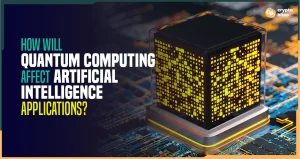
What is a Bitcoin Extractor – A Complete Guide!
Disclaimer: This is not intended as investment advice in any form.
Bitcoin mining is the process of generating new bitcoins. This is accomplished by solving complex mathematical equations that confirm cryptocurrency transactions.
When a miner successfully mines bitcoin, he or she receives a set amount of the digital money.
Bitcoin (BTC) was launched in 2009 by the anonymous Satoshi Nakamoto. It pioneered cryptocurrencies and remains the most valued asset in this asset class.
As of August 2023, Bitcoin’s price in the US market is $36,694.70 USD. The term “bitcoin extractor” has gained attention lately, sparking curiosity.
So, what is a bitcoin extractor exactly?
It’s a program or script made to collect data from the Bitcoin blockchain. This blockchain acts as a ledger, recording all transactions across the network.
To get data, you interact with the blockchain’s public APIs, or nodes. The process starts by connecting to a Bitcoin node. A node is a computer running Bitcoin software that maintains a copy of the entire blockchain.
The extractor talks to a node to fetch specific details. Which is much like transactions or block information. It gathers this information in formats like JSON or CSV for analysis.
Security is a big deal when making a Bitcoin extractor. To prevent unwanted access, you must handle secret keys and confidential data securely. And making queries efficient boosts the extractor’s performance.
Ultimately, a Bitcoin extractor simplifies getting data from the blockchain. A lot of information is saved on the Bitcoin network. This tool helps users look through and understand it.
In this article, we’ll cover all about a Bitcoin extractor. Let’s dive in!
Understanding Bitcoin Extraction
Cryptocurrency mining, or blockchain mining, is a method that relies on economic incentives. This establishes a secure and decentralized system for organizing data.
In this process, third parties involved in handling transactions are not centralized. Instead, they’re spread out across the network.
They’re incentivized with monetary rewards for executing their tasks correctly. This ensures the accuracy of the transactions they process.
However, any attempt at misconduct results in a loss of economic resources. This method stays honest as long as most of the people who use it do the same.
So, in Bitcoin mining, the goal is to create a bunch of blocks that can be mathematically proven to be in the right order. It takes a lot of resources to do this.
This relies on the unique properties of cryptographic hashes. Hashes are essentially a standardized way of encoding data.
Hashes function as one-way encryption. This makes it exceedingly difficult to reverse-engineer. You cannot do this with their input data without testing every possible combination.
So, how exactly is Bitcoin mined?
Bitcoin relies on mining. Specifically, the “proof-of-work” system is essential for its operation.
Both the difficulty and the hash are very large numerical values expressed in bits.
A hash is like a code that’s hard to figure out unless you have the exact starting information. It’s one-way and secure, making it almost impossible to reverse engineer.
Bitcoin miners do a massive number of these calculations per second. They do this until they find a hash that meets a certain difficulty level. This difficulty level adjusts regularly to keep the time between new blocks consistent.
The transaction data and a special code called a Merkle root work together to give each block its own unique ID. Even a tiny change in a block would completely change its hash. Which would make it evident that something’s wrong.
This protection stops anyone from tampering with the blockchain. Other computers in the network would instantly spot any alterations.
Bitcoin’s system is called “proof-of-work.” This makes miners put in real effort (using time and electricity) to create blocks. This distinguishes it from other ways of making blocks in cryptocurrencies.
To attack the Bitcoin network, you would need as much computer power as the whole network. This would be very expensive—billions of dollars’ worth—and impossible.
Generally, it takes about 10 minutes to create one bitcoin. But that timing can vary depending on the processing power of the hardware used for mining.
The hardware used for mining is known as application-specific integrated circuits (ASICs). They can be quite expensive, reaching up to $10,000.
Successful addition of a block to the blockchain rewards miners with 6.25 bitcoins.
About every four years, or every 210,000 blocks, this prize is cut in half.
As of November 2023, the trading value of bitcoin hovers around $36,400, making 6.25 bitcoins worth $227,500.
What is a Bitcoin Extractor?
A Bitcoin extractor is a piece of software or a tool that was made to get certain data from the Bitcoin blockchain.
The Bitcoin blockchain is a decentralized ledger that transparently records all Bitcoin transactions.
Extractors are programs that work with the blockchain. The blockchain can be accessed through extractor programs. They can return information like transaction records, wallet balances, or specific block data.
These tools serve various purposes. These include auditing transactions, analyzing blockchain activity, or generating custom reports.
A Bitcoin extractor might use blockchain explorer APIs. It might also connect directly to Bitcoin nodes to gather data.
Security is crucial in their development to safeguard private keys and sensitive data.
In the crypto industry, Bitcoin extractors are vital for research, development, and analytics. They offer insights into transaction patterns, market trends, and user behaviors.
They allow users to explore the huge amount of data saved on the Bitcoin blockchain. This enhances our understanding of the cryptocurrency landscape.
How Does a Bitcoin Extractor Work?
Cryptocurrency address extractors leverage advanced machine-learning algorithms for their operations.
What is their primary object? To identify and collect Bitcoin (BTC) addresses from diverse sources.
The extraction process comprises several stages, commencing with pattern recognition.
These algorithms acquaint themselves with the alphanumeric structure. They’re specific to BTC addresses. They also actively search for corresponding patterns within the data.
After pattern recognition, the tools systematically scan various sources. This is done to identify strings aligned with the recognized patterns.
This meticulous scanning process reveals potential BTC addresses.
However, it’s crucial to acknowledge the possibility of false positives. The tool might incorrectly identify an address.
To enhance accuracy, some extractors integrate multiple verification checks.
These checks aim to confirm the legitimacy of a detected Bitcoin address.
Verification might involve executing cryptographic calculations to ensure the identified address is genuine.
After extracting and verifying, the extractor makes a list of all found BTC addresses.
This list is structured in a CSV file, offering users a user-friendly format.
Also, the file has information like the file path where each address was found. It also has a unique identifier (GUID) for reference.
The compiled list of BTC addresses serves various purposes for users.
It can be employed for transaction verification. You can do audits or manage user accounts within the cryptocurrency ecosystem. Crypto address extractors are pivotal in streamlining the use of Bitcoin addresses.
What is a Nuix Bitcoin Extractor?
Nuix is complete extraction software. It utilizes indexed data from the Nuix Workstation. This is proving crucial in fraud investigations within the cryptocurrency sphere.
It has a Ruby script, which is tailored to scan plain text. It proves to be versatile when it comes to many data sources, like cloud storage, smartphones, laptops, and more.
This script is very good at finding secret addresses in the given data. It does so by using a regular expression method for pattern recognition.
Following this, Nuix employs a Python script for validation. This helps it collect more information, like transaction history, wallet balance, and throughput value.
The tool carefully arranges these findings. It then shows them in a simple CSV format for easy access and analysis.
Why Does Bitcoin Needs Miners?
Blockchain “mining” refers to the computational process undertaken by network nodes. This is done to validate information stored in blocks.
Miners essentially function as auditors. This earns them rewards for verifying the legitimacy of Bitcoin transactions.
This process serves to maintain honesty within the Bitcoin network. It also prevents the issue of “double spending,” where a bitcoin is spent twice.
In traditional currency, spending the same money twice isn’t feasible. Once you use a $20 bill to buy something, you no longer possess it.
However, without miners, Bitcoin as a network would persist. But with less incentive for participation.
Around 2140, no new bitcoins will be rewarded. But transactions will still need to be verified. Miners will be compensated with transaction fees. This is necessary for preserving the network’s integrity.
Bitcoin mining rewards are halved approximately every four years. Initially, in 2009, mining a block yielded 50 BTC. By 2012, it had halved to 25 BTC, then to 12.5 BTC in 2016.
On May 11, 2020, the reward halved again to 6.25 BTC and is anticipated to reduce further to 3.125 BTC around 2024.
Key Features of a Bitcoin Extractor
Bitcoin extractors possess key features essential for efficiently extracting and analyzing Bitcoin-related data. Let’s delve into these primary functionalities:
- Address and Key Retrieval
Extracting Bitcoin addresses is crucial for tracking transactions and identifying ownership. To do a full analysis and validation, you need to get both the public and private keys (xPubs and xPrvs).
- Pattern Recognition and Analysis
Utilizing regular expressions for pattern recognition helps identify Bitcoin-related information in diverse datasets. The tool is versatile and can easily handle datasets. It supports a wide range of datasets, including cellphones, computers, and cloud storage.
- Transaction History and Financial Tracking
Detailed transaction history extraction provides insights into the flow of funds. Wallet balance analysis offers a comprehensive view of financial movements. Gathering throughput value information enhances understanding of transaction dynamics.
- Integration with Nuix Software
Relying on Nuix Workstation’s data indexing capabilities for efficient data processing. Assisting in fraud investigations by locating pertinent information within the indexed data.
- Ruby Script for Scanning Plain Texts
Using a Ruby script makes it easier to retrieve Bitcoin-related data. The tool’s adaptability makes it suitable for use on a wide range of platforms and devices. It can also handle a wide variety of datasets.
- Validation Using Python Script
Utilizing a Python script for output validation ensures accuracy and reliability. It helps collect more information, like transaction history, for a better analysis.
- Presentation in CSV Format
Organizing and sharing findings in a CSV format makes them easier to access and use. The tool helps users make short and organized reports using Bitcoin information.
How to Set Up a Bitcoin Extractor Setup
You can mine bitcoin at home with a fast computer if it has the latest hardware, like top GPUs or ASICs.
However, even with this powerful hardware, mining may not be as fruitful. You might only earn a few cents per day. This is especially hard because Bitcoin mining difficulty changes constantly.
The difficulty of mining adjusts every 2,016 blocks (around two weeks). This is done to maintain a consistent block production rate of about one block every 10 minutes.
This adjustment happens based on the number of people mining. It ensures that the blockchain runs smoothly.
To mine effectively, you’ll need high-end GPUs or ASICs.
Good GPUs can cost between $1,000 and $2,000. ASICs can be even more expensive, sometimes tens of thousands of dollars.
ASICs are much more powerful and energy-efficient than CPUs or GPUs.
They’re constantly becoming even more powerful and efficient each year with newer chips.
For over $11,000, you can mine at 335 tera hashes per second using around 16.0 joules per tera hash.
Cheaper versions exist, but paying more gets you faster hashing speeds.
Mining in the cryptocurrency world involves more than just having powerful hardware. Linking that gear to the Bitcoin network is mostly dependent on mining software.
Examples of popular mining software are CGMiner, BFGMiner, and EasyMiner.
Miners use these apps to set up their equipment, join mining groups, and monitor their mining work.
Additionally, miners need an e-wallet to store their earned bitcoins.
When it comes to mining, miners have the option to go solo or join a mining pool. Mining alone can be challenging, leading to the creation of mining pools.
In a mining pool, miners form groups. They collectively tackle the increasing difficulty of mining. Each miner is compensated for their contribution to the work.
Combining computer power with mining makes it more efficient and easier to solve a block. This setup helps small miners earn Bitcoin by getting a part of the reward.
Final Words
“Bitcoin Extractor” refers to the process of mining. It is very important to the bitcoin system. The mining process creates new bitcoins and keeps network operations safe.
This mining enterprise has commercial potential but faces energy usage and regulatory scrutiny.
It is difficult to assume as to what will happen to bitcoin mining. Perhaps cryptocurrency will die out. Or mining might face even more scrutiny due to the environmental challenges it poses.
But mining extractors are a big thing. And if everything goes in the same pace, this industry will only get bigger.
Did you know Bitcoin there isn’t much Bitcoins left to mine? Check out how much Bitcoin is left to mine learn how this all works




